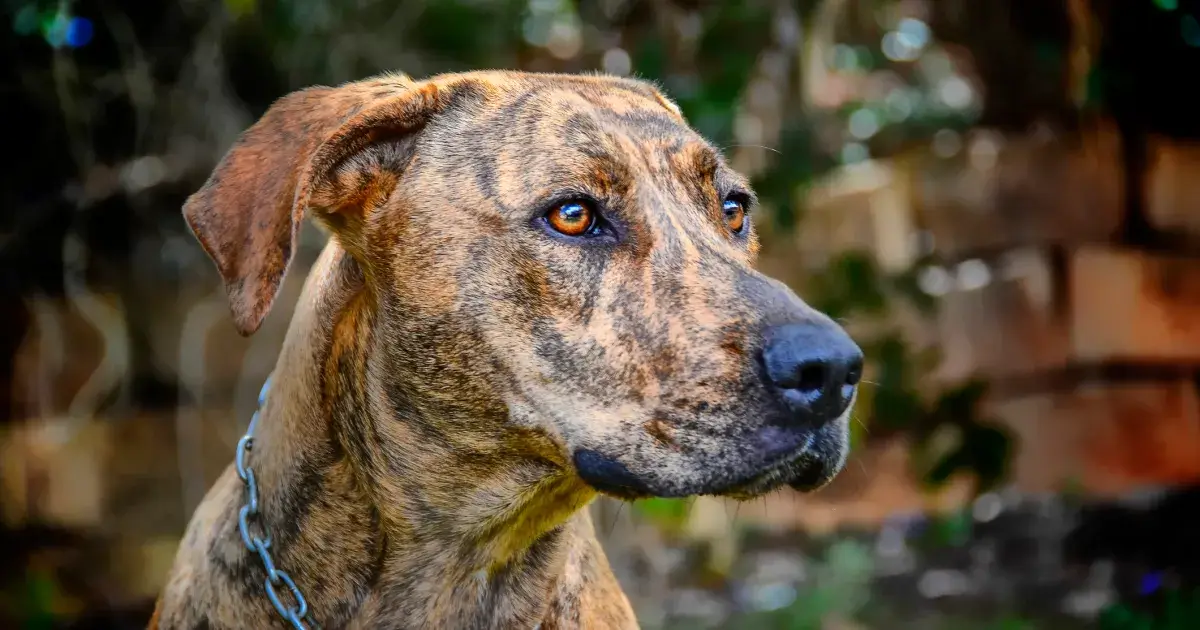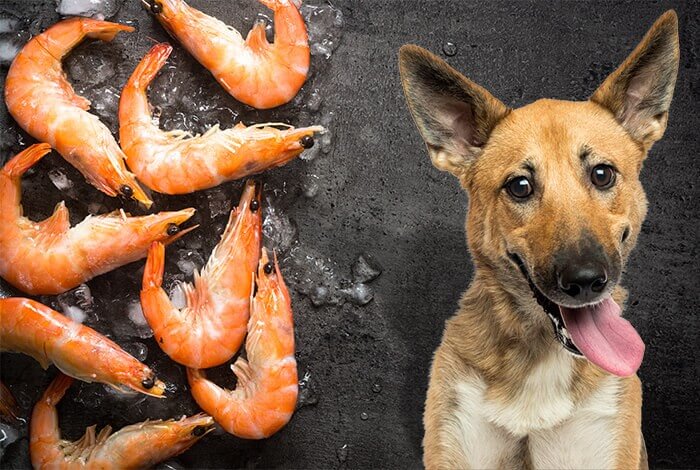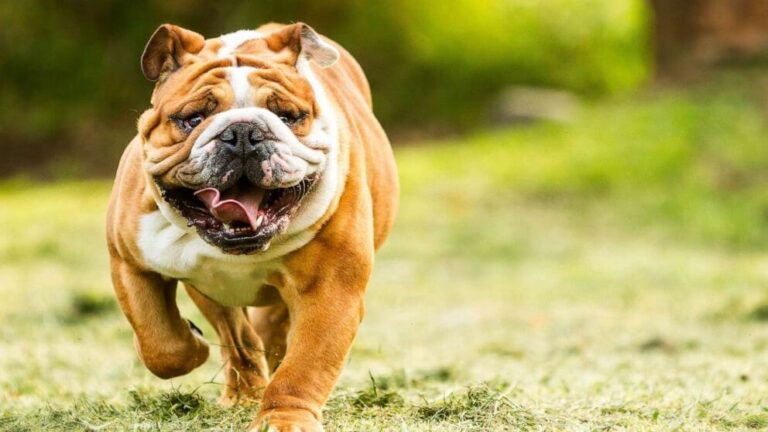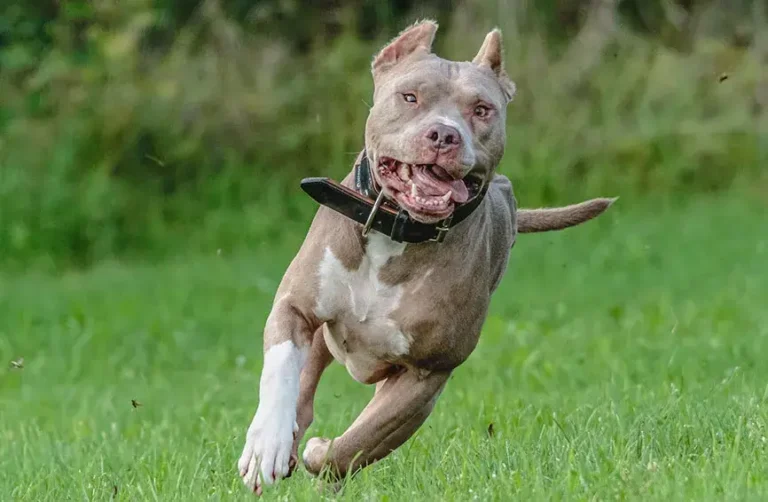Plott Hound Dog Breed: Description, Temperament, Lifespan & Facts
The Plott Hound dog, renowned for its tenacity and loyalty, is a breed with deep roots in American history. Originally bred for hunting wild boar, these dogs are celebrated for their stamina, determination, and unique brindle coats. As the official state dog of North Carolina, the Plott Hound has a storied past that adds to its charm and appeal.
Contents
Physical Description of the Plott Hound
Size and Weight
The Plott Hound is a medium to large-sized dog, typically standing 20 to 25 inches tall at the shoulder. Adult males usually weigh between 50 to 60 pounds, while females tend to be slightly lighter, weighing between 40 to 55 pounds.
Coat and Color
One of the most striking features of the Plott Hound is its beautiful brindle coat, which can range from black, brown, and tan to a lighter grayish hue. The coat is smooth, glossy, and dense, providing protection from the elements during long hunting trips.
Distinctive Features
Plott Hounds are muscular and well-proportioned, with a distinctive, strong muzzle and expressive brown eyes. Their ears are medium-length and drop down, giving them an alert and keen appearance. Their tails are typically carried high and may have a slight curve.
Plott Hound Temperament and Personality
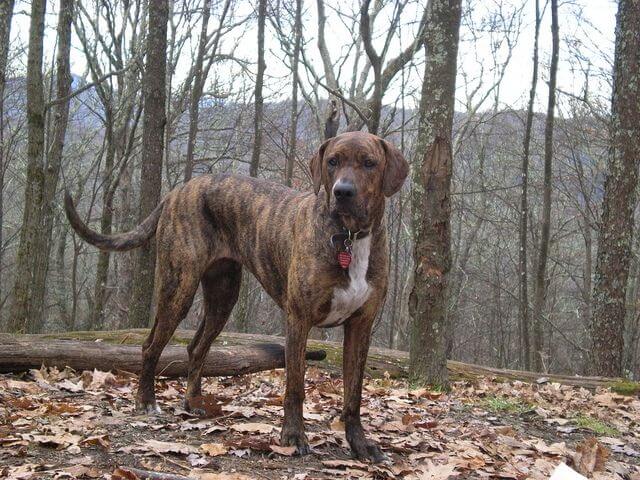
General Temperament
Plott Hounds are known for their courage and determination, traits that were essential for their original role in hunting. They are intelligent, alert, and fiercely loyal to their families. Despite their hunting prowess, they are also affectionate and enjoy spending time with their human companions.
Behavior with Family and Children
Plott Hounds can be excellent family pets. They are protective and watchful, making them good watchdogs. When properly socialized, they are gentle and patient with children. Their energetic nature means they thrive in active households where they can participate in family activities.
Interaction with Other Pets
While Plott Hounds can get along with other dogs, their strong prey drive means they may not be the best fit for homes with smaller pets like cats or rabbits. Early socialization and consistent training can help mitigate this instinct.
Living with a Plott Hound

Ideal Living Conditions
Plott Hounds are versatile and can adapt to various living conditions, but they do best in environments where they have space to roam and explore. A home with a large, securely fenced yard is ideal. They are not well-suited to apartment living unless their exercise needs are met daily.
Exercise Needs
These dogs have high energy levels and require regular, vigorous exercise to stay healthy and happy. Daily walks, hikes, and playtime are essential. Plott Hounds also enjoy activities that engage their keen sense of smell, such as scent tracking games.
Training Tips
Plott Hounds are intelligent but can be stubborn. Consistent, positive reinforcement training methods work best. Early socialization and obedience training are crucial to help them develop into well-mannered adults.
Health and Lifespan of Plott Hounds
Common Health Issues
Plott Hounds are generally healthy, but like all breeds, they can be prone to specific health issues. Common concerns include hip dysplasia, bloat, and ear infections. Regular veterinary check-ups and a healthy diet can help manage these risks.
Preventive Care and Regular Check-ups
Routine vet visits, vaccinations, and preventive care are essential to keep a Plott Hound healthy. Dental hygiene is also important, as is regular ear cleaning to prevent infections.
Expected Lifespan
The average lifespan of a Plott Hound is between 12 to 14 years. With proper care, some Plott Hounds can live even longer, enjoying a healthy and active life well into their senior years.
Diet and Nutrition for Plott Hounds
Recommended Diet
A balanced diet rich in high-quality proteins, healthy fats, and essential vitamins and minerals is vital for the health of a Plott Hound. Look for dog foods that list meat as the first ingredient and avoid fillers like corn and soy.
Feeding Schedule
Plott Hounds should be fed two meals a day to maintain their energy levels and prevent bloat, a condition they are somewhat prone to. Portion control is important to prevent obesity.
Foods to Avoid
Avoid feeding your Plott Hound foods that are toxic to dogs, such as chocolate, grapes, onions, and garlic. Table scraps and fatty foods should also be avoided to prevent digestive issues and obesity.
Grooming and Maintenance
Grooming Requirements
The Plott Hound’s short coat is relatively low-maintenance. Regular brushing, about once a week, will help keep their coat healthy and reduce shedding.
Bathing and Hygiene
Bathing should be done as needed, typically every few months, unless they get particularly dirty. Use a gentle dog shampoo to avoid skin irritation. Regular nail trimming and dental care are also essential parts of their grooming routine.
Shedding and Coat Care
Plott Hounds shed moderately year-round. Regular brushing will help manage shedding and keep their coat looking its best. During shedding seasons, more frequent brushing may be necessary.
Fun Facts about Plott Hounds
Unique Traits
Plott Hounds are one of the few American breeds with German origins. Their distinctive brindle coat and hunting prowess set them apart from other hounds.
Famous Plott Hounds
While not widely known in popular culture, Plott Hounds have made their mark in hunting communities and have been featured in various hunting publications and events.
Interesting Anecdotes
The breed is named after Johannes Plott, who brought the ancestors of these dogs to America in the 18th century. Plott Hounds have a reputation for being able to track and hunt wild boar and bear, showcasing their incredible endurance and bravery.
Adopting a Plott Hound
Finding a Reputable Breeder
When looking to adopt a Plott Hound, seek out reputable breeders who prioritize the health and temperament of their dogs. Responsible breeders will provide health clearances and a detailed history of the puppy’s lineage.
Adoption from Rescues and Shelters
Many Plott Hounds in need of homes can be found through breed-specific rescues and local animal shelters. Adopting from a rescue not only gives a dog a second chance but also supports animal welfare.
Cost of Owning a Plott Hound
The initial cost of purchasing a Plott Hound from a breeder can vary, but expect to spend between $500 and $1,000. Ongoing costs include food, grooming, veterinary care, and supplies, which can add up over the dog’s lifetime.
Conclusion
The Plott Hound dog is a remarkable breed known for its hunting skills, loyalty, and striking appearance. With the right care, training, and environment, these dogs can make wonderful companions for active families. Their rich history and unique traits make them a breed worth considering for those looking for a dedicated and energetic canine friend.
Related: Mountain Cur Dog
FAQs about Plott Hound Dogs
Q: Are Plott Hounds good with children?
A: Yes, Plott Hounds are generally good with children, especially when properly socialized from a young age. They are protective and affectionate with their family members.
Q: Do Plott Hounds require a lot of exercises?
A: Yes, Plott Hounds have high energy levels and need regular, vigorous exercise to stay healthy and happy. Daily walks, hikes, and playtime are essential.
Q: Are Plott Hounds easy to train?
A: Plott Hounds are intelligent but can be stubborn. Consistent, positive reinforcement training methods work best, along with early socialization and obedience training.
Q: What health issues are common in Plott Hounds?
A: Common health issues include hip dysplasia, bloat, and ear infections. Regular veterinary check-ups and preventive care can help manage these risks.
Q: How long do Plott Hounds typically live?
A: The average lifespan of a Plott Hound is between 12 to 14 years, with proper care contributing to a healthy and active life.
- Golden Retriever Pros and Cons: What Every Pet Parent Should Know - 15 September 2025
- Cane Corso Dog Breed: Health, Care, and Lifespan - 14 September 2025
- Catahoula Leopard Dogs: Description, Temperament, Lifespan, & Facts - 21 July 2025

